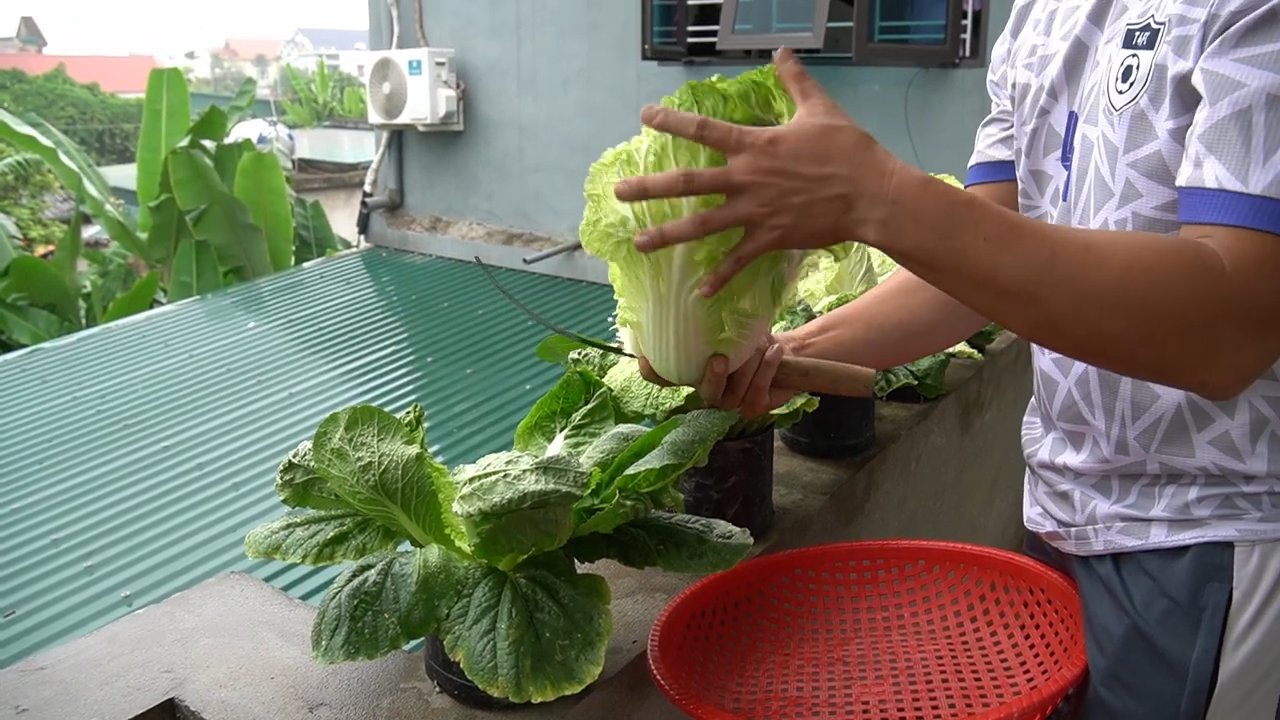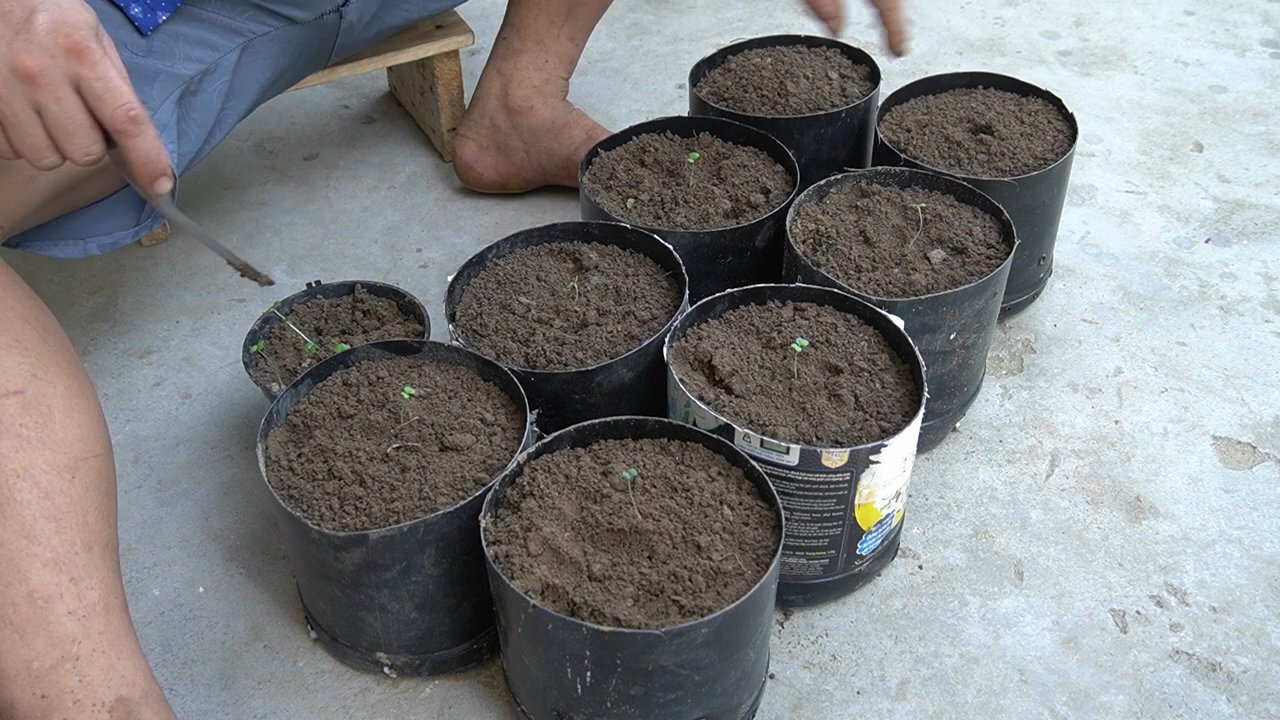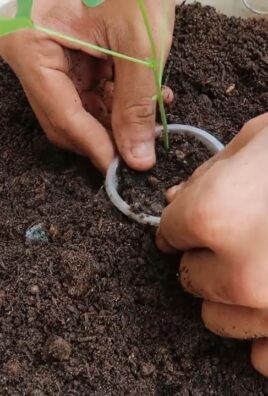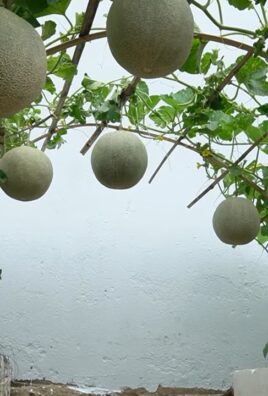DIY Balcony Lettuce Garden: Imagine stepping onto your balcony and snipping fresh, crisp lettuce for your salad, sandwich, or even a vibrant green smoothie. Sounds idyllic, right? Well, it’s more achievable than you might think! For centuries, humans have cultivated gardens in even the most unexpected places, from window boxes in bustling cities to terraced hillsides in ancient civilizations. This deep-rooted connection to growing our own food is experiencing a modern resurgence, and I’m here to show you how to participate, even if all you have is a small balcony.
In today’s fast-paced world, access to fresh, healthy produce can be a challenge. Supermarket lettuce, while convenient, often lacks the flavor and nutrients of homegrown varieties. Plus, let’s be honest, it can be expensive! That’s where the magic of a DIY balcony lettuce garden comes in. This isn’t just about saving money; it’s about connecting with nature, reducing your carbon footprint, and enjoying the unparalleled satisfaction of nurturing something from seed to salad.
This article is packed with easy-to-follow instructions, clever hacks, and insider tips to help you create a thriving lettuce patch on your balcony, no matter your experience level. Get ready to transform your outdoor space into a miniature edible oasis!

DIY Balcony Lettuce Garden: Fresh Greens at Your Fingertips!
Hey there, fellow balcony gardeners! I’m so excited to share this project with you. Imagine stepping onto your balcony and snipping fresh, crisp lettuce for your salad – it’s easier than you think! This guide will walk you through creating your own thriving lettuce garden, even if you have limited space. Let’s get growing!
What You’ll Need: The Essentials
Before we dive in, let’s gather our supplies. Don’t worry, you probably have some of these lying around already!
* Containers: This is where the magic happens!
* I recommend using containers that are at least 6 inches deep. This gives the lettuce roots enough room to grow.
* Consider using window boxes, hanging baskets, or even repurposed plastic tubs. Just make sure they have drainage holes!
* I personally love using rectangular planters because they maximize space on my balcony.
* Potting Mix: Not just any soil will do!
* Use a high-quality potting mix specifically designed for containers. This type of mix is lightweight and drains well, which is crucial for lettuce.
* Avoid using garden soil, as it can become compacted and doesn’t provide adequate drainage.
* I usually add a bit of compost to my potting mix for extra nutrients.
* Lettuce Seeds or Seedlings: The star of the show!
* You can start lettuce from seeds or buy seedlings from your local garden center.
* I prefer starting from seeds because it’s more cost-effective and you have a wider variety to choose from.
* Some of my favorite lettuce varieties include Romaine, Butterhead, and Loose Leaf.
* Watering Can or Hose: Keeping your lettuce hydrated is key!
* A watering can with a gentle rose head is perfect for watering seedlings.
* For larger containers, a hose with a spray nozzle might be more convenient.
* Fertilizer (Optional): A little boost for your greens!
* A balanced liquid fertilizer can help your lettuce grow faster and produce more leaves.
* I usually fertilize my lettuce every two weeks during the growing season.
* Trowel or Small Shovel: For planting and transplanting.
* Gardening Gloves: To keep your hands clean and protected.
* Labels: To keep track of your lettuce varieties (especially if you’re planting multiple types).
* Location: A sunny spot on your balcony.
* Lettuce needs at least 4-6 hours of sunlight per day.
* If your balcony is mostly shady, you can still grow lettuce, but it might not grow as quickly.
Step-by-Step Instructions: Planting Your Lettuce
Okay, let’s get our hands dirty! Here’s how to plant your lettuce, whether you’re starting from seeds or seedlings.
Planting from Seeds
1. Prepare Your Containers:
* Fill your containers with potting mix, leaving about an inch of space at the top.
* Gently pat down the soil to create a firm surface.
2. Sow the Seeds:
* Sprinkle the lettuce seeds evenly over the surface of the soil.
* Cover the seeds with a thin layer of potting mix (about 1/4 inch).
* Lettuce seeds need light to germinate, so don’t bury them too deep.
3. Water Gently:
* Use a watering can with a gentle rose head to water the soil thoroughly.
* Be careful not to wash away the seeds.
4. Keep the Soil Moist:
* Lettuce seeds need consistent moisture to germinate.
* Water the soil whenever it feels dry to the touch.
* You can cover the containers with plastic wrap to help retain moisture, but be sure to remove it once the seedlings emerge.
5. Wait for Germination:
* Lettuce seeds typically germinate in 7-14 days.
* Once the seedlings emerge, place the containers in a sunny location.
6. Thin the Seedlings:
* Once the seedlings have a few true leaves (the second set of leaves), thin them out so that they are spaced about 4-6 inches apart.
* This will give the lettuce plants enough room to grow.
* Don’t just pull them out! Gently snip the unwanted seedlings at the soil line with scissors. This prevents disturbing the roots of the remaining plants.
Planting Seedlings
1. Prepare Your Containers:
* Fill your containers with potting mix, leaving about an inch of space at the top.
* Gently pat down the soil to create a firm surface.
2. Dig Holes:
* Dig holes in the soil that are large enough to accommodate the root balls of the seedlings.
* Space the holes about 4-6 inches apart.
3. Remove Seedlings from Their Containers:
* Gently squeeze the sides of the seedling containers to loosen the root balls.
* Carefully remove the seedlings from their containers.
4. Plant the Seedlings:
* Place the seedlings in the holes and gently backfill with potting mix.
* Make sure the top of the root ball is level with the surface of the soil.
5. Water Thoroughly:
* Water the seedlings thoroughly after planting.
* This will help settle the soil around the roots.
Caring for Your Lettuce Garden: Keeping it Thriving
Now that your lettuce is planted, it’s time to take care of it! Here are some tips for keeping your lettuce garden healthy and productive.
* Watering:
* Lettuce needs consistent moisture to thrive.
* Water your lettuce plants whenever the soil feels dry to the touch.
* Water deeply, but avoid overwatering, which can lead to root rot.
* The best time to water is in the morning, so the leaves have time to dry before nightfall.
* Fertilizing:
* Lettuce is a relatively light feeder, but it will benefit from regular fertilization.
* Use a balanced liquid fertilizer every two weeks during the growing season.
* Follow the instructions on the fertilizer label.
* You can also add compost to the soil to provide extra nutrients.
* Sunlight:
* Lettuce needs at least 4-6 hours of sunlight per day.
* If your balcony is mostly shady, you can still grow lettuce, but it might not grow as quickly.
* Consider using grow lights to supplement the sunlight.
* Pest Control:
* Lettuce is susceptible to a few common pests, such as aphids and slugs.
* Check your plants regularly for signs of pests.
* If you find pests, you can try spraying them with insecticidal soap or neem oil.
* You can also hand-pick the pests off the plants.
* For slugs, try placing beer traps around your lettuce plants.
* Weed Control:
* Keep your lettuce garden free of weeds.
* Weeds can compete with lettuce for nutrients and water.
* Hand-pull weeds as soon as you see them.
* Mulching around your lettuce plants can also help prevent weeds.
* Bolting:
* Bolting is when lettuce plants start to produce flowers and seeds.
* This usually happens when the weather gets hot.
* Once lettuce bolts, the leaves become bitter.
* To prevent bolting, try to keep your lettuce plants cool and well-watered.
* You can also plant bolt-resistant varieties of lettuce.
* If your lettuce does bolt, you can still harvest the leaves, but they might not taste as good.
Harvesting Your Lettuce: Enjoying the Fruits (or Greens!) of Your Labor
The best part of growing your own lettuce is, of course, harvesting it! Here’s how to harvest your lettuce so you can enjoy fresh greens all season long.
* When to Harvest:
* You can start harvesting lettuce leaves as soon as they are large enough to eat.
* The size of the leaves will depend on the variety of lettuce you are growing.
* Generally, you can start harvesting when the leaves are about 4-6 inches long.
* How to Harvest:
* There are two main ways to harvest lettuce:
* Cut-and-Come-Again: This method involves harvesting the outer leaves of the lettuce plant, leaving the inner leaves to continue growing. This allows you to harvest lettuce multiple times from the same plant.
*

Conclusion
So, there you have it! Creating your own DIY balcony lettuce garden isn’t just a fun project; it’s a gateway to fresh, flavorful salads right outside your door. Imagine stepping onto your balcony and snipping vibrant, crisp lettuce leaves for your lunch, knowing exactly where they came from and what went into growing them. This isn’t just about convenience; it’s about connecting with your food, reducing your carbon footprint, and adding a touch of green serenity to your urban space.
Why is this a must-try? Because it’s accessible, even if you have limited space or gardening experience. It’s cost-effective, especially when you consider the savings on store-bought lettuce, which can often be expensive and lack the freshness of homegrown varieties. And most importantly, it’s incredibly rewarding. There’s something deeply satisfying about nurturing a plant from seed to harvest, and enjoying the fruits (or, in this case, leaves) of your labor.
But don’t stop at just one type of lettuce! Experiment with different varieties to discover your favorites. Try a mix of loose-leaf lettuces like Romaine, Butterhead, and Oakleaf for a diverse salad bowl. Consider adding other leafy greens like spinach, arugula, or even herbs like basil and parsley to your balcony garden for an even wider range of flavors. You can also explore vertical gardening techniques to maximize your space and create a stunning green wall. Think about using repurposed materials like old pallets or plastic bottles to build your planters, adding a touch of eco-friendliness to your project.
Don’t be afraid to get creative and personalize your DIY balcony lettuce garden to suit your taste and style. Add colorful flowers to attract pollinators and enhance the beauty of your space. Use decorative pots and planters to create a visually appealing display. And most importantly, have fun with it!
We’re confident that once you experience the joy of growing your own lettuce, you’ll be hooked. It’s a simple yet profound way to bring nature into your life and enjoy the freshest, most delicious salads imaginable.
So, what are you waiting for? Gather your supplies, choose your lettuce varieties, and get started on your DIY balcony lettuce garden today! We’re eager to hear about your experiences. Share your photos, tips, and challenges in the comments below. Let’s create a community of balcony gardeners and inspire others to embrace the joy of homegrown lettuce! We encourage you to share your journey on social media using #BalconyLettuceGarden and tag us so we can see your amazing creations. Let’s spread the word about the ease and benefits of growing your own fresh greens, one balcony at a time. Happy gardening!
FAQ
What kind of lettuce grows best on a balcony?
Loose-leaf lettuce varieties are generally the best choice for balcony gardens. These types, such as Romaine, Butterhead, and Oakleaf, are relatively compact, quick to mature, and can be harvested continuously by picking individual leaves as needed. This makes them ideal for small spaces and ensures a steady supply of fresh lettuce. Head lettuce varieties, like iceberg, require more space and a longer growing season, making them less suitable for balcony gardening. Consider your local climate when selecting varieties; some lettuces are more heat-tolerant than others.
How much sunlight does my balcony lettuce garden need?
Lettuce thrives in partial to full sunlight, requiring at least 4-6 hours of direct sunlight per day. However, in hotter climates, providing some afternoon shade can prevent the leaves from wilting or becoming bitter. Observe your balcony throughout the day to determine the amount of sunlight it receives. If your balcony is mostly shaded, consider using grow lights to supplement the natural light. Rotate your lettuce plants regularly to ensure even exposure to sunlight.
What type of soil should I use for my balcony lettuce garden?
Use a high-quality potting mix that is well-draining and rich in organic matter. Avoid using garden soil, as it can be too heavy and compact for container gardening. Look for a potting mix specifically formulated for vegetables or herbs. You can also amend your potting mix with compost or other organic materials to improve its fertility and drainage. Ensure your containers have drainage holes to prevent waterlogging, which can lead to root rot.
How often should I water my balcony lettuce garden?
Lettuce needs consistent moisture to thrive, but avoid overwatering, which can lead to root rot. Water your lettuce plants when the top inch of soil feels dry to the touch. Water deeply, ensuring the water reaches the roots. Water in the morning to allow the leaves to dry before nightfall, which can help prevent fungal diseases. During hot weather, you may need to water your lettuce plants more frequently. Check the soil moisture regularly and adjust your watering schedule accordingly.
How do I fertilize my balcony lettuce garden?
Lettuce is a relatively light feeder, but it benefits from regular fertilization. Use a balanced, water-soluble fertilizer diluted to half strength every 2-3 weeks. Alternatively, you can use a slow-release fertilizer at planting time. Avoid over-fertilizing, as this can lead to leggy growth and bitter-tasting leaves. Organic fertilizers, such as compost tea or fish emulsion, are also excellent choices for feeding your lettuce plants.
How do I harvest my balcony lettuce garden?
You can start harvesting loose-leaf lettuce when the leaves are about 4-6 inches long. Simply snip off the outer leaves with scissors or a knife, leaving the inner leaves to continue growing. This cut-and-come-again method allows you to harvest lettuce continuously for several weeks. Harvest in the morning when the leaves are crisp and cool. Wash the lettuce leaves thoroughly before eating.
What are some common pests and diseases that affect balcony lettuce gardens?
Common pests that can affect lettuce include aphids, slugs, and snails. Inspect your plants regularly for signs of infestation and take action promptly. You can remove aphids with a strong spray of water or use insecticidal soap. Slugs and snails can be handpicked or trapped using beer traps. Common diseases that can affect lettuce include downy mildew and powdery mildew. Prevent these diseases by providing good air circulation, avoiding overwatering, and using disease-resistant varieties. If you notice signs of disease, remove the affected leaves and treat the plants with a fungicide.
Can I grow lettuce on my balcony year-round?
Whether you can grow lettuce year-round on your balcony depends on your local climate. Lettuce is a cool-season crop that thrives in temperatures between 60-70°F (15-21°C). In areas with mild winters, you can grow lettuce throughout the year. In areas with hot summers, you may need to provide shade or grow lettuce during the cooler months. In areas with cold winters, you can grow lettuce indoors under grow lights or in a greenhouse. Choose lettuce varieties that are suitable for your local climate and growing conditions.
How do I prevent my lettuce from bolting (going to seed)?
Bolting is when lettuce plants prematurely flower and produce seeds, which can make the leaves bitter. Bolting is often triggered by hot weather or stress. To prevent bolting, choose heat-tolerant lettuce varieties, provide shade during hot weather, water regularly, and harvest frequently. If your lettuce plants start to bolt, you can still harvest the leaves, but they may not taste as good.
What other plants can I grow with lettuce on my balcony?
Lettuce is a good companion plant for many other vegetables and herbs. Some good companion plants for lettuce include radishes, carrots, onions, garlic, and marigolds. Radishes help to break up the soil and deter pests. Carrots help to improve soil drainage. Onions and garlic deter pests. Marigolds attract beneficial insects that prey on pests. Avoid planting lettuce near fennel, as it can inhibit its growth.




Leave a Comment